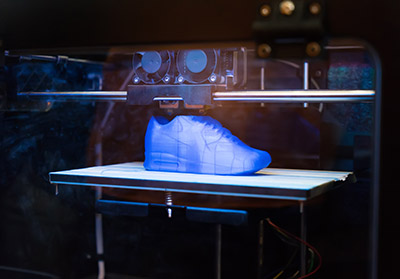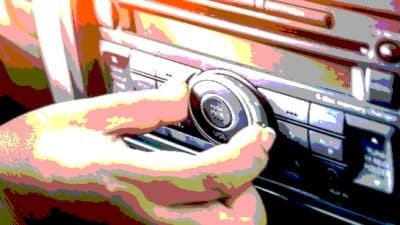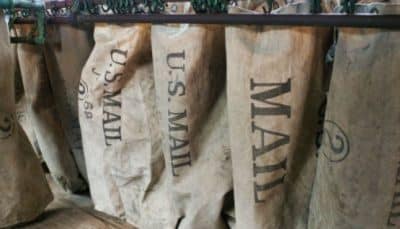
– stock.adobe.com)
As the day passes, customers continue to value their uniqueness. It, then, becomes even more crucial to design products to meet the unique needs of every individual. As the development of technology, mass customization is possible to be made.
The question that keeps popping up is, “how can mass production be tailored to meet specific customer requirements?” While trying to find answers to this question, we entered the realm of mass customization. Many people regard this as the future of manufacturing with a perfect mix of 3D printing services and parametric modeling.
In this article, you will learn the relationship between mass customization and rapid prototyping, including some great examples of similar projects. Let’s get right to it.
What is mass customization?
The concept of mass communication varies for different companies with respect to their product lines. However, there is a general understanding as regards mass communication. It refers to a manufacturing trend allowing customers to choose and modify specific products or services to meet their needs. At the same time, the process retains the low per-unit cost associated with mass production.
Mass customization seeks to enable customers’ participation in the creation process while integrating a similar input as mass production. Mass customization relies on an efficient and effective supply chain coupled with flexible, automated production processes.
Mass customization as the new wave of traditional manufacturing
Decades ago, manufacturing processes like rapid injection molding were not for more than basic form prototype. Even 3D printing was not all that developed, taking prolonged cycle time while giving low-quality products. At that time, production processes could not cope with variations involved in mass customization.
Manual changing of products requires an incredible amount of labor, and consequently, increased labor costs. However, we have come a long way since then. SLS and SLA prints are strong and come with beautiful surface finishes. Printing speeds are also getting faster, with new technologies that print ten times faster. The speed and costs of production continue to drop with every new cycle. It certainly feels like we are at the age of miracles, making quick and unique parts.
How do you start mass customization with rapid prototyping?
Before starting mass customization, you must first identify the features of your product that you can easily customize and those you can’t. The success of mass customization usually depends on the speed and flexibility of additive manufacturing. It depends mainly on modern techniques like rapid prototyping and CAD modeling.
When we speak of mass customization, additive manufacturing offers some amazing economic benefits. 3D printing is an innovative process that does not require any specific tools or molds that you would typically need for traditional manufacturing. Instead, all you need is an effective setup of proper digital tools.
With this, you can implement any customization choices by your customers within a 3D file and go to production immediately. The good news is that you won’t need to bear any additional costs on mass-customized products.
Why is 3D printing suitable for mass customization?
Additive manufacturing or 3D printing plays a significant role in the realization of mass customization. Every mass customization process relies on quick and cost-effective workflow and supply chains. This way, engineers can produce required variations in part shape, size, color, and finish. This was practically unachievable for traditional manufacturing processes.
3D printing allows for the digital configuration of part designs without using expensive tooling or manual adjustments. Every structure is based on customers’ inputs and variables. There are specifically built design software for mass communication. They help manufacturers automate workflows and manage custom inventory seamlessly.
Generally, 3D printing offers the following advantages for mass customization:
Unique customer experience
Mass customization with 3D printing puts you a step ahead of the competition. This is a new frontier in the rapid manufacturing industry that helps you create a unique buyer experience and increase customer satisfaction. With the right customization technology in place, your customers would feel more attached to the production process. All of these lead to increased fulfillment on the customers’ part.
Flexible production process
When compared to traditional manufacturing methods, 3D printing comes with lower fixed costs. The costs involved in setting up the manufacturing techniques for products are lower. In turn, it doesn’t require any amortization over bigger production series. Unlike rapid injection molding, 3D printing does not rely on molds. Also, it can adapt to any product.
Moreso, designers can iterate designs with multiple variations without attracting additional costs or loss in productivity. This way, companies can easily cope with milestone requirements for mass customization to set up flexible production processes.
Fast and qualitative production
By using 3D printing for mass customization, there is no limit to the variety in your arsenal. You and your customers can choose from several qualitative materials ranging from metals to plastics. The process is free of mold change or retooling, making it a lot faster. The speed, along with customer flexibility with materials, equals meaningful customization options.
Mass customization examples
Different companies across different industries understand the benefits associated with 3D printing and mass customization. These companies leverage the technologies to make some exciting and innovative products. Here are some examples:
High-end furniture products
Furniture companies employ 3D printing for mass customization. This way, they allow their customers to customize furniture pieces to meet their unique needs. The process enables faster manufacturing processes and labor cost reductions.
Mass customization for the automotive industry
Many automotive brands now move towards mass customization with 3D printing. These brands now create fine-tuned services that fully implement mass customization. shops help clients to indicate the unique changes they want to see on their vehicles, including side plates, door handles, and more. The parts are customized according to clients’ creative style and top-notch materials.
Mass customization for the electronics industry
There are now customized 3D printed, electronic products here and there. They include earphones, circuit boards, sensors, and many more. Companies like Normal now have apps that can help customers specify the kind of specifications they want for their products. The fantastic advantage is that custom-fit products are ready within a short period.
Final thoughts
Thanks to the manufacturing revolution, now we can simply use rapid prototype technologies, like CNC machining, rapid injection molding and 3D printing to achieve mass customization. Moreover, online rapid prototyping manufacturers like RapidDirect developed an instant quoting engine to make custom products from quotation to manufacturing in a short time, which make mass customization more available. We can clearly see how rapid prototyping is driving mass customization.
Story by Keyla Kown










